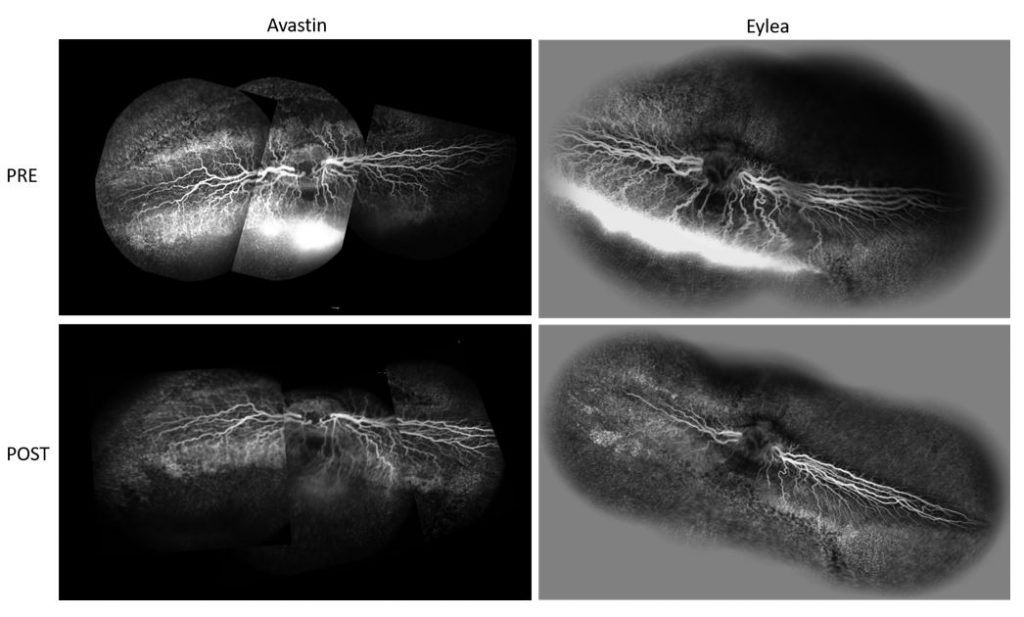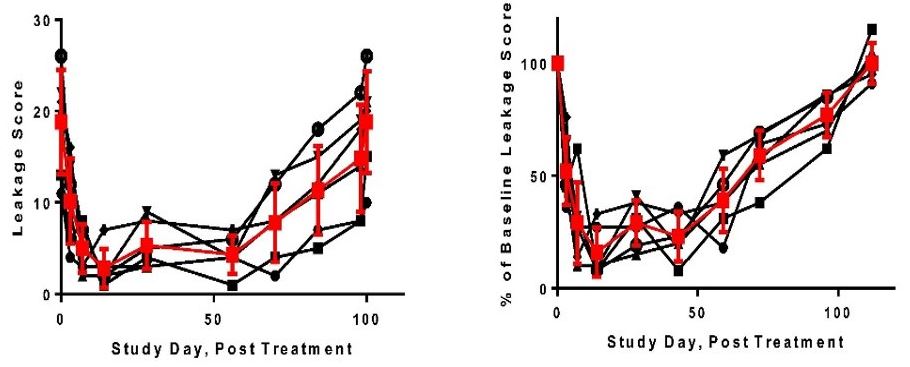Summary: DL-AAA induces retinal neovascularization and chronic retinal vasculature leakage similar to patients with advanced neovascular wet AMD.
Model Description
DL-2-aminoadipic acid (DL-AAA) is a retinal glial cell toxin that has been shown to induce retinal neovascularization and chronic retinal vasculature leakage very similar to patients with advanced neovascular (“wet”) AMD. DL-AAA is injected intravitreally (IVT) and over a period of 10 weeks new vessels sprout from the central retinal vasculature and remain permeable. The central retinal vasculature of the rabbit covers an area that is devoid of neural retina, therefore, animals that received DL-AAA retain significant vision despite the presence of significant vascular leak and retinal leakage, which persist up to 24 months in rabbit eyes. This model is considered “the best Wet AMD model currently available”.
At Experimentica, we have fully implemented and validated the rabbit DL-AAA model with clinically relevant reference compounds, bevacizumab (Avastin®) and aflibercept (Eylea®), and the most comprehensive list of read-outs.
| Animal species | Rabbits |
| Method of induction | DL-2-aminoadipic acid (DL-AAA) |
| Follow-up period | 10 weeks – 24 months |
| Route of compound administration | Intravitreal, topical, systemic |
| Read-outs | 1. In vivo imaging: qualitative grading of retinal leakage; 2. Histology: retinal morphology and thickness |
Outcomes and Read-Outs
In vivo imaging







